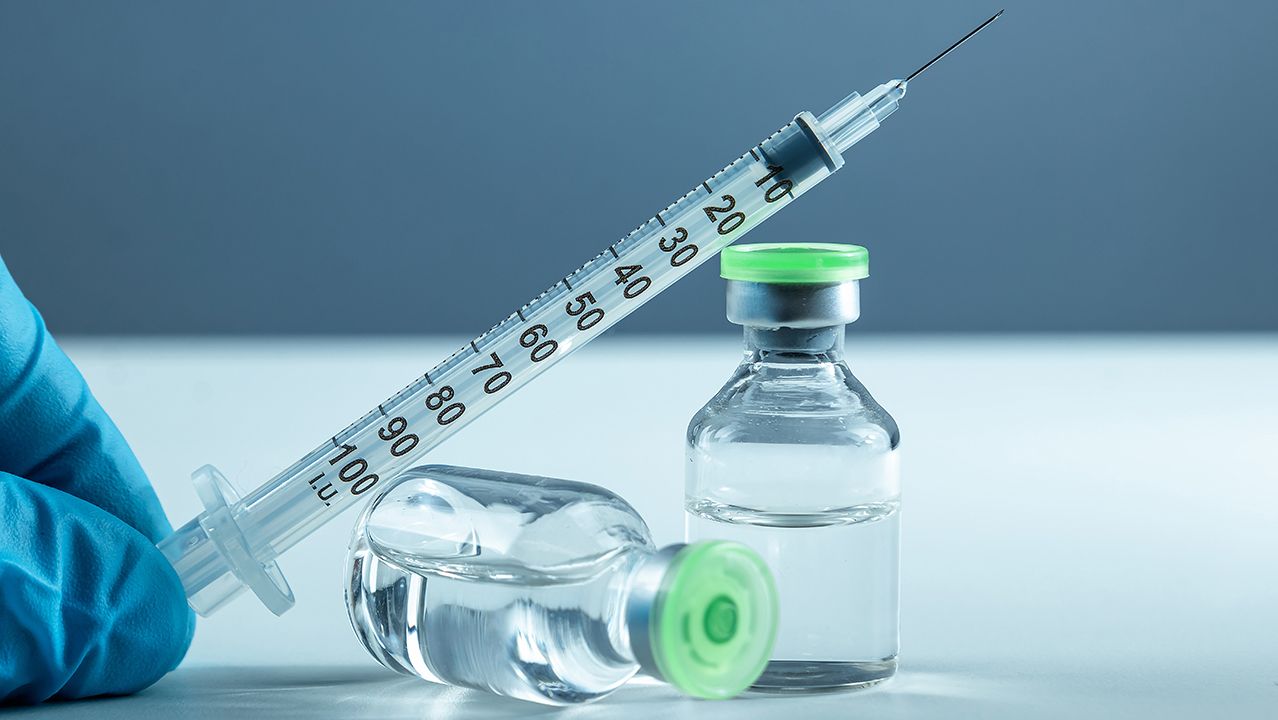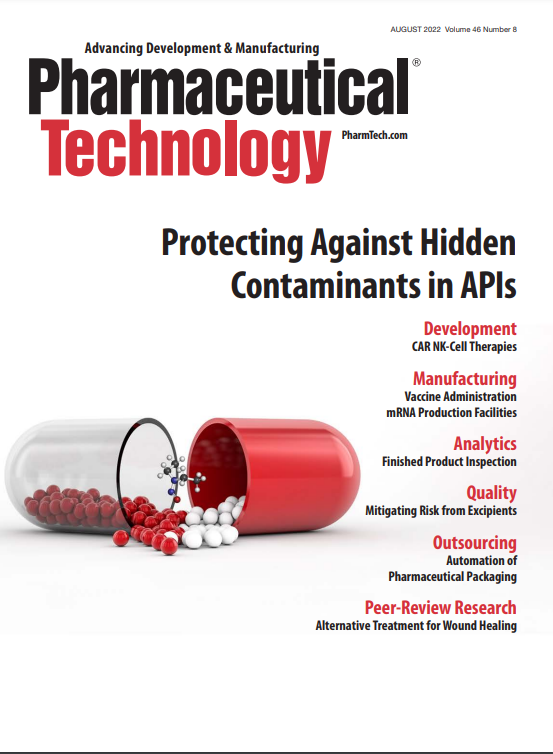Inspecting Finished Products with Precision
Automated finished product inspection has been widely adopted in the bio/pharmaceutical industry.
ALIAKSANDR MARKO - STOCK.ADOBE.COM

Production of high-quality, defect-free finished products is a top priority in the bio/pharmaceutical industry, primarily to ensure the safety of the end-user—patients. The automation of finished product inspection is leading to gains in efficiency for companies and, as such, is being widely adopted.
To find out more about automated finished product inspection, some of the common tools used, potential pitfalls of approaches, the impact of increasing complexity of therapeutics in development, and regulatory changes, Pharmaceutical Technology spoke with Tyler Harris, applications engineer, and Oliver Stauffer, CEO, both from PTI—a specialist in packaging inspection technologies.
Widely adopted
PharmTech: Could you provide a little bit of background into automated finished product inspection, its importance, and where the industry currently sits on its use?
Harris (PTI): Automated finished product inspection has been widely adopted by the pharmaceutical industry with the use of various test methods. Additionally, not all these test methods are container closure integrity technology (CCIT) methods, non-deterministic, or likely to be accepted by regulatory agencies in the near future.
Visual inspection, torque testing, high-voltage leak detection (HVLD), headspace analysis, vacuum decay, and airborne ultrasound all inspect finished products in some form from label alignment to leak detection, and seal quality. No one test method is suitable for all applications, and more than one test method may be required.
Although methods such as visual inspection are widely adopted by the industry, CCIT methods have not yet become commonplace, although [they are] gaining traction. The newfound increase of CCIT in the automated finished product inspection space comes from the development of scalable test methods and regulatory pressure. Benchtop, offline inspection methods validate automated sampling and 100% inline inspection systems. The practice of offline benchtop quality testing will never dissolve or be replaced by automated inspection; scalability decreases validation time, risk, and analysis time.
Tools and shortcomings
PharmTech: What sort of analytical tools are commonly used in automated finished product inspection?
Stauffer (PTI): The technologies used for automated inspection are application driven and depend heavily on the package format and container contents. Typically, headspace analysis, vacuum decay, or high-voltage leak detection (HVLD) are the go-to inspection technologies for parenterals.
PharmTech: Are there any pitfalls/analytical shortcomings that need to be addressed?
Harris (PTI): The most critical aspect of inspection is selecting the best test method for the application at hand. Some methods are suitable for a variety of applications while others have specific characteristics the applications must have to be effective. In regard to deterministic non-destructive CCIT methods, each have shortcomings that prevent robust, reliable, and repeatable results. Headspace analysis can only test transparent/translucent rigid applications before labeling and the package must have headspace.
One of the more common automated inspection technologies is traditional AC HVLD. Applications suitable for HVLD must be cylindrical, glass or plastic, and conductive liquid with low viscosity. High voltage can have negative effects on active drug product and produce large amounts of ozone.
Over the last half decade, MicroCurrent HVLD (HVLDmc) has been proven to greatly reduce the voltage exposure to the product and reduce ozone to near negligible amounts. Since the mid-1980s, vacuum decay has been utilized to test full container integrity of non-porous flexible and rigid containers. Although widely adopted for benchtop applications, it is not without pitfalls. Vacuum decay is only suitable for non-porous packaging and has difficulty testing large-molecule liquid products. Vacuum decay is often used for automated sampling systems but rarely used for 100% inline testing due to its long test cycles. Shortcomings are overcome by necessary innovation in this regulatory driven climate.
Increasingly complex therapeutics
PharmTech: How has automated finished product inspection adjusted to the increasingly complex therapeutic landscape?
Harris (PTI): Therapeutics require far more attention than standard pharmaceutical products. With small batch sizes and costly product, non-destructive methods are mandatory in this market segment. Therapeutics are typically large molecule and sometimes viscous liquids stored in vials, syringes, and intravenous (IV) bags. The increase in large-molecule, high risk products has led to the need for HVLD, and HVLDmc in the automated inspection space, further leading to new innovations in handling, test cycle speed, and reliability.
Although superior to vacuum decay for large-molecule and viscous liquid products, HVLD struggles to effectively test the entirety of an IV bag. During an HVLD test, liquid must cover every interior surface of the package. IV bags are not easily rotated and typically contain a large air bubble. These two issues lead to false negatives and inconsistent results. This is where vacuum decay is highly effective. Although limit of detection (LOD) may be higher due to the molecule size, vacuum decay is able to detect leaks in IV bags in automated sampling inspection systems and offline systems.
With small batch sizes and high risk of therapeutic products, benchtop systems are capable of successfully testing product to ensure sterile barrier is intact and no leaks in the package are present. With small batch sizes and frequent changes to the production process/line, validation must be completed with every change. Automated inspection system validation can stretch across multiple weeks and hold up processing of time sensitive live product. Benchtop offline testing stretches across a few days and can be easily completed by a trained operator without the need for validation of the automated handling mechanisms. Testing offline allows for increased attention to the package and lower machine costs. Additionally, many of these therapeutic products are manufactured in a manual process which does not warrant a need for automated inspection.
Regulatory updates
PharmTech: What regulatory changes have impacted automated finished product inspection, in your expert opinion?
Stauffer (PTI): Foundational regulatory guidance documents have been updated in both the [United States] and European market space. United States Pharmacopeia (USP) <1207> was recently updated and reflects the shift away from probabilistic test methods to more reliable and traceable deterministic methods. USP <1207> is prescriptive about the technologies that should be considered as improved alternatives to traditional, less effective methods such as dye ingress.
In Europe, the European Medicines Agency (EMA) is updating its Annex 1 guidance, which is less prescriptive around the suggested technologies, but with guidance that frequency of testing and the method of testing should be scientifically appropriate for the commensurate level of risk associated with the application. The need to test fused containers still stands, and the proposed language further clarifies that IV bags also fall within that category. The final draft will most likely have some leniency related to that requirement. Regardless, in both the US and Europe, the regulatory guidance documents are driving towards increased testing frequency using deterministic test methods.
PharmTech: Are there further regulatory changes, particularly pertaining to analytical analysis, in the near future that you believe will impact automated finished product inspection?
Stauffer (PTI): The regulatory space is forever in a constant state of flux. The most recent proposed changes revolve around the European Union’s (EU’s) Annex 1 and its drafted revisions. The proposed changes call for 100% testing and deterministic test methods for package integrity on all fused containers. This refers to products such as ampoules, pre-filled syringes, and IV bags. The draft specifies that visual inspection alone is not suitable for these types of packages and must be used in conjunction with a deterministic method. At this moment, IV bags are the most difficult application to test whether automated or benchtop and there are two possible outcomes to the final revision of EU Annex 1. Regulatory demands can force innovation, or regulation must wait for further development of the aforementioned deterministic inspection methods.
Future drivers
PharmTech: Could you highlight any future trends that you deem to be important within automated finished product inspection in terms of analytics?
Harris (PTI): Inspection trends are driven by reliability, [regulations], and most commonly, cost. An uptick in automated sampling systems and scalable test methods is on the horizon. The ability to have the same technology in an automated format and in a laboratory setting is critical in being able to compare results, analyze data, validate, and ensure automated systems are functioning properly. Automated sampling systems allow for less human interaction, rapid inspection, and a decrease in inspection time. These benefits ultimately lead to a decrease in cost despite a larger capital expense.
About the author
Felicity Thomas is the European/senior editor for Pharmaceutical Technology Group.
Article details
Pharmaceutical Technology
Vol. 46, No. 8
August 2022
Pages: 42–43
Citation
When referring to this article, please cite it as F. Thomas, “Inspecting Finished Products with Precision,” Pharmaceutical Technology 46 (8) 2022.

Drug Solutions Podcast: A Closer Look at mRNA in Oncology and Vaccines
April 30th 2024In this episode fo the Drug Solutions Podcast, etherna’s vice-president of Technology and Innovation, Stefaan De Koker, discusses the merits and challenges of using mRNA as the foundation for therapeutics in oncology as well as for vaccines.